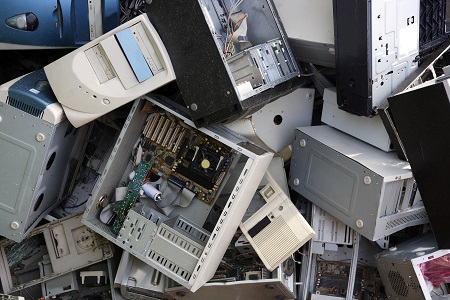Disposable Technology Is Expensive
It seems like nothing is built to last anymore. Incandescent bulbs, if you can get them, last around 1,500 hours. But an incandescent light bulb built in the late 1890’s has been turned on for nearly every minute of the last 119 years, and it’s still going strong. The same goes for clothes – they’re built to be disposable now, but a century ago clothes lasted for hundreds (or thousands!) of washes.

Computers have followed a similar trajectory. The first computers were extraordinarily expensive, and they were built to last. By the 1990s, they were built to be disposable. Technology was advancing so rapidly that even if a computer would work for five years, nobody would want to use it in five years. The idea of upgrading a computer became less appealing than buying a new one, so nearly everything was ‘glued’ together on the motherboard to reduce costs. When one of these parts died, you threw the entire PC out and got a new one.
Something unexpected happened, however. PC technology advanced so rapidly that very few home users need the full power of their PC. Many people could use a PC for five years or even more, if a PC would last that long. But most won’t.
That’s because most consumers never went back to demanding a high-quality build. People were trained to ask about the speed of the processor, not the quality of the capacitors or the number of physical layers used to build the motherboard. This has been great for PC manufacturers who need to sell PCs – the low-quality builds have kept consumers replacing their PCs much more often.
Business-Class Computers are Better Computers
This ‘fast fashion’ mentality is fine for consumers – they’re used to getting a new phone every two years anyway. But for businesses, it’s a big problem.
A consumer can configure a new computer and pull their files back from a cloud storage product in 30 minutes. Depending on which computer fails in a business network, it can take days to reconfigure. It can also bring down all sorts of critical functions, including software, printers, phones, or even the ability to log into the network.
Unexpectedly replacing an entire computer is a far bigger headache for businesses than for a consumer. If a part can be overnighted and installed to quickly bring a PC back to life, it can save far more than the cost of a new PC. But not only are consumer class PCs likely to fail, they’re also less likely to have replacement parts available, especially if they’re more than a few years old.
This is why business-class hardware is more expensive than consumer-class hardware with the same capabilities. You aren’t just buying the capabilities; you’re buying a better-built, more stable machine. The electricity being provided to the components is cleaner. The processors are rated to last longer, often because the ones with the highest quality test results are pulled off the manufacturing lines and reserved for businesses. Most consumer products offer a 3-year warranty at most, but many technology providers sell 5-year warranties on their business-class hardware. Manufacturers also stock replacement parts for business-class computers so they can fulfill warranties, especially if the part is no longer being manufactured.
So while that Christmas deal at Best Buy might look like a great opportunity to replace some of your office hardware, it isn’t. It might be a great deal now, but when you set them up, you’re also buying more downtime, shorter replacement times, and idle workers in the future. If it seems too good to be true, it probably is.
To learn how WingSwept can help your business make better use of technology, call us at 919-460-7011 or email us at Team_WingSwept@WingSwept.com.
